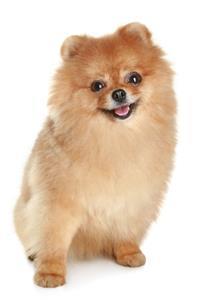Find products that match your dog’s needs

The Japanese Spitz dog is a breed that has developed fairly recently. The dogs from this breed first emerged in Japan in the 1920s. They were born as a result of crossbreeding between several white Spitz breeds from different parts of the world. Japanese Spitz dogs have been bred as companion dogs and make for great pets.
Japanese Spitz dogs are very affectionate by nature and love having constant attention and care from their adoptive family. They are a small sized breed and perfectly well-suited to living in an apartment. Even though they have a high tolerance for cold climates, they can adapt well to both cold and hot weather conditions. So, getting a Japanese Spitz puppy might be the right choice if you live in a flat as opposed to a house with an outdoor space.
If you are planning to adopt a Japanese Spitz dog as a pet, it helps to know some basic information on this breed. Here is what you need to know about a Japanese Spitz’s lifespan, weight and height ranges, and type of coat:
Weight | 5 to 9 kg |
Height | 10 to 16 inches |
Lifespan | 12 to 16 years |
Coat | Thick and long |
Note: The weight and height mentioned on the table is of a full-grown Japanese Spitz and not of a Japanese Spitz puppy.
Japanese Spitzes are small dogs with a compact build. They have an outer coat covered with thick fur which is as white as snow. These dogs are also extremely pretty to look at, so don’t be surprised if they draw a lot of attention while out on walks.
If you want to bring home a dog of this breed, you might want to know how to identify a purebred Japanese Spitz. Purebred Japanese Spitz can be easily recognised by these following features:
As mentioned earlier, a Japanese Spitz is very affectionate towards its family. They are also very friendly towards kids and get along well with them. However, a Japanese Spitz’s temperament does see the dog get a little wary of sudden approaches from complete strangers. This breed prefers a gentler approach. Due to this trait, Japanese Spitz dogs also tend to bark at strangers who visit their home. A Japanese Spitz has great courage and intelligence and makes for a devoted companion. These dogs also get along well with other pets, provided they have been taught socialising with other animals at an early age.
No, Japanese Spitzes are extremely friendly and need very little training. They are highly intelligent, and this quality makes their training process even simpler. You can begin training your Japanese Spitz puppy to socialise as soon as possible for training at an early age helps them get along better with kids and other pets. A Japanese Spitz is always eager to please its owners. So, your pet will mostly likely be more eager to learn your instructions than you will be to teach them.
If you are planning on adopting a Japanese Spitz, here are some details to note on caring for this breed.
The dogs of this breed are prone to a condition called Patella luxation, which causes the dislocation of kneecaps in animals. This is a genetic issue occurring within the breed. You can get your dog tested for this by a vet. Japanese Spitzes also sometimes suffer from a condition that makes their eyes water and causes ‘tear-staining.’ It can either be a result of allergies, hormonal changes, or blockages in tear ducts.
Surprisingly enough, the Japanese Spitz is easy to groom despite having a coat covered with thick fur. This is mainly because the breed’s coat has a texture that doesn’t really let mud stick. Moreover, Japanese Spitzes are fussy when it comes to cleanliness. Just like cats, they do not like being dirty and will lick themselves clean. With proper grooming, they only require a bath about twice a year. At the time of coat shedding, which usually occurs just once a year, you can simply comb out the loose fur.
Japanese Spitz dogs do not need a lot of exercise. However, they are very active and enjoy being in the outdoors or going on walks with their owners. If you are planning on letting this breed roam around in your garden, do note that they can jump very high. So, before adoption, do make sure that your fences are high enough, so your pup doesn’t run away or get lost.
Japanese Spitzes have no special dietary requirements and can be fed with regular dog food from a reputed brand. You can serve the food to them as two meals a day. When giving your Japanese Spitz some dog treats, ensure that you don’t overfeed them. Overfeeding can lead to your pup or dog gaining excess weight which, in turn, can cause health issues.
The Japanese Spitz dog breed has developed fairly recently in Japan. The white German Spitz, which was imported to Japan from China in the 1920s, is believed to be the direct ancestors of the Japanese Spitz. However, other studies claim that this breed finds its origin in the ancient Peat Dogs that lived near the Swiss Lakes about 6000 years ago. The first time this breed was introduced to the world was in 1921 at a dog show in Japan. However, the Japanese Spitz that we see today are actually the result of crossbreeding between numerous white Spitz breeds since 1921. The Japanese Spitz finally got its standards and recognition as a breed in 1948.
Want to learn more about different dog breeds? Head over to our breeds category page for more information.
The Japanese Spitz should be socialised with other home pets from an early age to ensure a peaceful coexistence. The Japanese Spitz has a dominant nature, so without early socialisation or training, it may try to behave assertively over other house pets.
Dogs from the Japanese Spitz breed make for the perfect family companions. They are high on playfulness, affection, and loyalty and will love to always hang around with their family.
Japanese Spitzes are companion dogs that thrive on attention; they do not like being left home alone. You can train them at a young age to be home alone for a few hours. However, they still may not like being alone for extended periods.
Despite having a thick coat with lush fur, Japanese Spitz dogs are very easy to groom. This is because dirt and mud do not stick to their coats. Even if they get dirty, Japanese Spitzes lick themselves clean. So, brushing their coats once a week is sufficient.
Japanese Spitz dogs do tend to bark loudly at strangers who visit their home. This is because the breed is naturally protective of its family and displays this protectiveness through barking.

Find a PEDIGREE® stockist
near you!
Buy online
Click to buy from any of the retailers below

